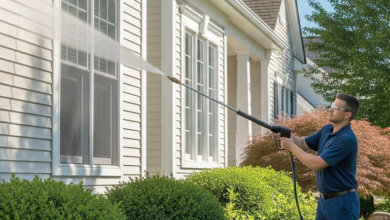
Reverse Mortgages in Australia: Everything You Need to Know in 2025
Introduction
As more Australians look to secure a financially stable retirement, reverse mortgages in Australia continue to grow in popularity. This financial tool allows seniors to unlock the equity in their homes without needing to sell or move. But with regulations, products, and market conditions changing each year, it’s essential to stay informed. In this article, we’ll cover everything you need to know about reverse mortgages in 2025, including how they work, who they suit, their pros and cons, and how to choose the right provider.
If you’re considering this option, reverse mortgages in Australia can be explored in more detail through trusted specialists like Seniors First, which connects seniors with regulated lenders and expert guidance.
What Is a Reverse Mortgage?
Definition and Purpose
A reverse mortgage is a type of loan designed for homeowners aged 60 or older. It allows them to access a portion of their home’s value as cash while continuing to live in the property. Unlike traditional loans, there are no mandatory repayments during the life of the loan. Instead, the loan balance grows over time as interest is added, and it is repaid when the home is sold, the borrower moves into aged care, or passes away.
How Reverse Mortgages Work in 2025
Current Process and Guidelines
- Eligibility: Homeowners aged 60 and above
- Loan Amount: Depends on your age, the property’s value, and the lender’s terms
- Interest Rates: Typically higher than standard home loans and can be fixed or variable
- No Regular Repayments: Unless voluntarily made
- Loan Repayment: Occurs when the home is sold or the borrower permanently vacates it
The No Negative Equity Guarantee (NNEG) remains a legal requirement in Australia, meaning you or your estate will never owe more than the market value of your home.
See also: SEO for HVAC Companies: How to Rank Higher and Get More Customers
Key Features of Reverse Mortgages in Australia
Main Product Highlights
- Age-based borrowing amounts
- Flexible payment options
- You retain full homeownership
- Continued home occupancy
- Regulation under Australian consumer law
Benefits of Reverse Mortgages
Advantages for Senior Homeowners
- Tax-free access to equity
- Greater financial freedom in retirement
- No need to downsize or sell
- Optional repayments only
- Legal protections under national regulations
Risks and Considerations
Points to Understand Before Applying
- Loan balance increases through compound interest
- Reduction in inheritance value
- Potential impact on Age Pension or government benefits
- Need to maintain the property
- May reduce future loan access
Eligibility Requirements in 2025
Basic Conditions You Must Meet
- Must be aged 60 or over
- Must own a qualifying Australian property
- Must receive legal advice
- Must meet the lender’s criteria
- Must submit required identification
How Much Can You Borrow?
Loan to Value Ratio (LVR)
The amount you can borrow depends on your age:
- At 60: around 15–20% of home value
- At 75: around 30–35%
Your financial situation and long-term needs are also considered by the lender.
Choosing a Reverse Mortgage Provider
What to Look for in a Lender or Broker
- Reputation and registration
- Transparent fees and interest rates
- Flexible loan features
- Customer service and support
- Independent advice and comparisons
You can begin your research with providers like Seniors First, which helps seniors navigate the reverse mortgage process with expert advice and access to leading lenders.
Regulatory Protections in Place
Government Safeguards for Borrowers
- Compulsory legal and financial advice
- No Negative Equity Guarantee (NNEG)
- Disclosure of all loan projections
- Option to cancel during a cooling-off period
Frequently Asked Questions
1. Can I lose my home with a reverse mortgage?
No. As long as you meet the loan terms, you retain ownership and can live in your home for life.
2. Will a reverse mortgage affect my Age Pension?
It might. Depending on how the funds are used or saved, your pension could be impacted. Speak with Centrelink or a financial adviser.
3. Are repayments required while I’m alive?
No. Repayments are optional while you live in the home. The loan is repaid when you sell, move permanently, or pass away.
4. Can I use the money for anything I want?
Yes. There are no spending restrictions. You can use it for medical care, renovations, travel, or daily living expenses.
5. What if my home sells for less than the loan amount?
You are protected by the No Negative Equity Guarantee. You or your estate will never owe more than the home’s value.
Conclusion
Reverse mortgages in Australia are a flexible financial solution for seniors who want to stay in their homes and enhance their retirement lifestyle. In 2025, the product is more regulated, borrower-focused, and secure than ever before. However, it is still essential to understand the long-term implications, especially regarding interest accumulation and the effect on your estate.
Always compare lenders, seek professional legal and financial advice, and only proceed once you fully understand your obligations. A reverse mortgage can be a smart move for the right person with the right guidance.
For expert help in exploring your options, visit Seniors First, one of Australia’s leading specialists in reverse mortgages.




